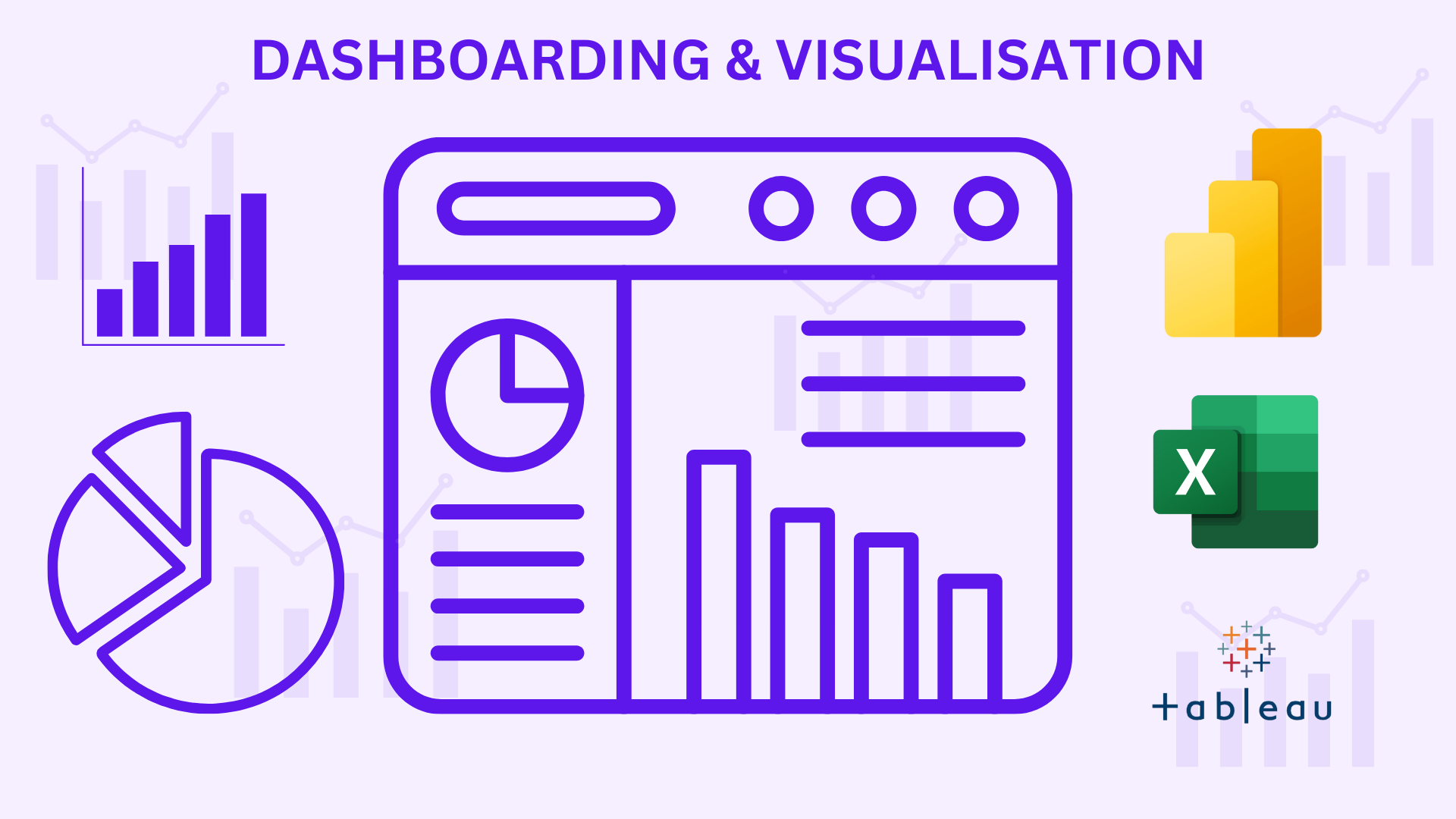Dashboarding & Visualisation

Visualization and dashboarding are two related concepts that are used to communicate data to audiences & stakeholders in a way that is easy to understand.
Data Visualisation: The process of expressing data in a visual manner, such as charts, graphs, or maps, is known as data visualisation. This can assist to make data more intelligible and entertaining, as well as discover patterns and trends that may not be obvious when looking at raw data.
Dashboarding: Dashboarding is the practise of developing a single interface that displays a variety of data visualisations in an easy-to-scan and interpret format. Dashboards are frequently used to measure key performance indicators (KPIs) and other metrics, and they can be used to monitor a company’s or organization’s performance.
Visualization and dashboarding are both important tools for data analysis and decision-making. By using these tools, organizations can make better sense of their data and take informed action.
Dashboards are also interactive making them extremely flexible tools that puts power in users’ hands. A dashboard doesn’t answer one question & then loses its usefulness, instead it can answer multiple questions based on what user is searching for and how it is used. Instead of building 10 separate charts to answer 10 questions, just one interactive dashboard does the job. Creating a dashboard that empowers users to interpret data on their own.
Types of dashboards
Strategic Dashboards – Strategic dashboards focuses on long term goals & strategies at the highest level of metrics. It usually contains information that is useful for enterprise-wide decision making.
Operational Dashboards – Operational Dashboards tracks short term performance and intermediate goals. It usually contains information on the time scale of days, months, or weeks, and they can provide performance insights almost in real time. Operational dashboards could focus on customer service team performance.
Analytical Dashboards – Analytical dashboards consist of the datasets and the mathematics used in the sets.
It contains details involved in the use, analysis and predictions made by data scientists. Data Science teams usually create and maintain most technical category as analytics dashboard.
Organising Dashboard Elements
- Once charts are placed into dashboards, rearrangement should be done in a configuration that best suits the stakeholder needs.
- Some placement decisions have been already been made during mock-up planning stage. Make sure to reference the low fidelity drafts when building visualisations.
- Also consider previous discussions with stakeholders about their needs & relevant metrics & KPIs.
Best Design Practices To be Followed
1. Prioritisation & Hierarchy – Items can be prioritised & can be done in hierarchical order by increasing size compared to other visualisations.
2. Grouping objects that show a topic or tell a story helps ensure that our dashboard has logical flow.
3. Hide objects – Organise visualisations on multiple pages or place them within drop down menus that hide parts of dashboard from main screen. By hiding some elements, we can spotlight others, avoid clutter without deleting content & even increase processing speed.
4. Don’t group objects based on chart type. Instead, objects should be organised by topic or metric.
